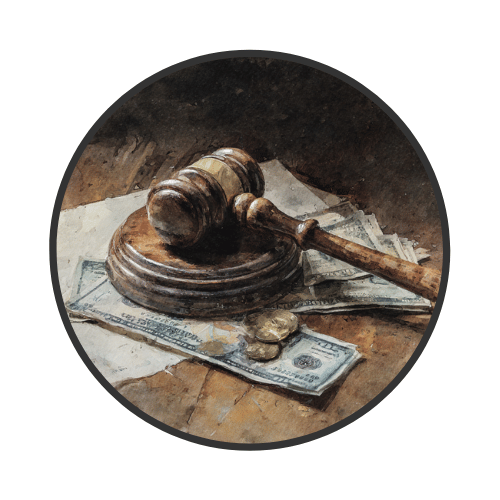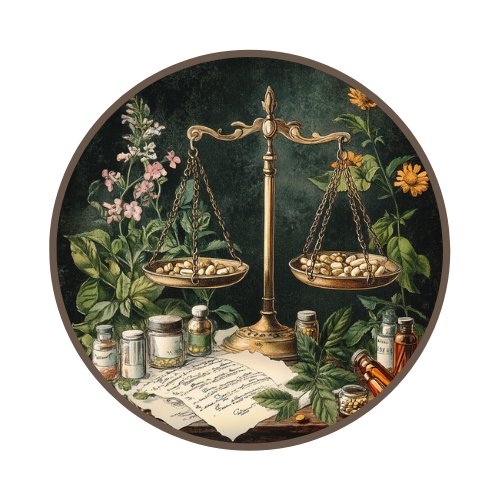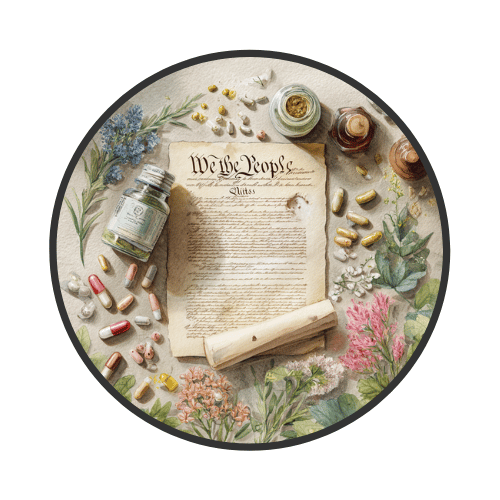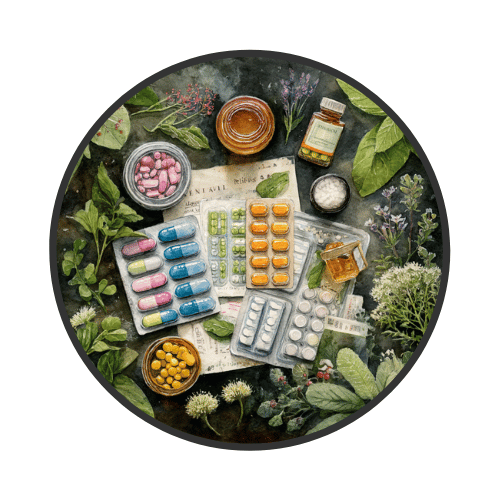On April 13, 2023, the Federal Trade Commission (FTC) sent a notice to 670 food and supplement companies that may (or may not) be making unsubstantiated claims. RidgeCrest Herbals was one of these companies. So did we do something wrong? No, the warning list specifically says (on every page) that it doesn’t mean that. And the list also includes companies like Amazon.com, Bayer, CVS Pharmacy, and Walmart.
The purpose of the letter, according to the accompanying press release, was to trigger enhanced penalties for companies that have been previously warned. The penalties were originally designed to punish knowing violations. But FTC wants enhanced penalties even for a first offense, so they sent these “notice letters” to a whole lot of companies so that if they commit future violations, FTC can lower the boom in the harshest possible way.
The enhanced penalties are over $50,000 per incident, which in FTC’s view, is every time a consumer sees an unsubstantiated ad. These enhanced penalties add up fast—show an ad to just 20 people, and you may be on the hook for one million dollars. One super bowl ad (costing $7 million) would incur a trillion dollars in penalties. FTC’s job is “protecting America’s consumers” so with penalties like this, you’d think that unsubstantiated health claims must be the greatest threat on the planet to ordinary Americans. In real life, there are much bigger threats, as we’ll see.
For many years, both the FDA and FTC have been warning of supplements that don’t work, describing them as ‘snake oil’. They demand scientific ‘proof’ that favors, and even requires, powerful and dangerous drug-like effects. Backed by medical establishment experts, they argue that without randomized clinical trials (RCTs), we can’t know whether a product is effective or not. But applying a narrow cookie-cutter approach to defining what is “competent and reliable” actually cuts out a lot of valuable, empirically derived evidence that has stood the test of time.”
Ironically, the evidence shows that real Chinese snake oil liniment actually IS effective, and always was. Snake oil was never the problem—it was people selling counterfeit ‘snake oil’ liniments who first drew the wrath of federal authorities over one hundred years ago. Promoter Clark Stanley was fined $20 in 1916, yet regulators and self-appointed ‘industry watchdogs’ are still flogging that dead horse today. Snake oil was never the problem—fraud was the problem, and yes, fraud still happens today. But it’s far easier to justify federal budgets for ‘industry regulation’ than for ordinary garden-variety fraud, which is usually a matter for local prosecutors.
People don’t much care what works for others—they want to know what works for them. And because every human body is different, there is no way to tell whether any medicine (snake oil or otherwise) is effective in any individual case, except to try it. We can make a guess based on prior experience and evidence of all kinds. We may even know the odds for a specific population, but we still can’t predict specific case results. It’s like Russian roulette-–you may know exactly what the odds are (5 of 6 empty cartridge chambers), but you still don’t know what happens when you pull the trigger.
It’s a safe bet that If we make the wrong assumptions and ask the wrong questions, we’ll get the wrong answers. Conventional western medicine has followed the “one disease, one target, one drug” model for the last hundred years. We have assumed that every disease or other health problem has one “best” answer, which we call the “standard of care”. We have assumed that Evidence-Based Medicine (EBM) will guide doctors to make better treatment decisions based on the latest and best clinical evidence. This simplifying assumption is naive at best and assumes several things that we already know are wrong: that clinical trials are affordable, unbiased, replicable, and trustworthy; that busy doctors can keep abreast of them; that drug companies don’t falsify data; that study populations fairly represent actual patients; and that a single-drug solution is better than a more complex approach. Each of these assumptions is known to be false in many cases.
One of the problems with most single-ingredient drugs is that both desired and adverse effects usually increase with dosage. The relationship between primary and adverse effects is fixed, and both usually increase with dosage. The relationship varies from one individual to another, but you generally get both primary and adverse effects together–-just as if you if you pick up one end of a stick, the other comes along with it. The only way to get a stronger effect from a single ingredient is to increase the dosage—increasing the adverse effects too. There’s the rub—when you increase the dose to help more people, you hurt more people too. Single-ingredient dosage requires the devil’s own cost-benefit analysis, balancing the benefit to the many against the harm to the few. The more potent (effective) the drug, the more dangerous it is—it’s as simple as that. Our potent drugs kill us in large numbers, yet federal regulators discourage safer and gentler alternatives, for fear they might be ineffective. They’re straining at gnats, while swallowing camels (Matt. 23:24). Dangerous drugs are a far bigger threat to consumers than unsubstantiated claims, no matter how you look at it.
Herbalists have known to prefer complex formulas in smaller doses for literally thousands of years. Most herbal traditions, including Ayurvedic (Indian subcontinent), Babylonian, Egyptian, Greco-Roman, Islamic, Traditional Chinese, Japanese Kampo, European herbalism, American Eclectic herbalism, and others, have relied extensively on combination remedies and formulas, used to reduce the dosages and side effects of simple individual medicines, and to make them more consistent across individual human variations. They tailored their formulas as needed to suit individual requirements or ingredient availability. Today, cutting-edge medicine is just now adopting reduced-dose multi-drug cocktails for AIDS, cancer, psychiatry, blood pressure, liver or kidney failure, and heart disease, among others.
Today, regulators like FTC and FDA are increasingly insisting on scientific ‘proof’ of efficacy (potency). They should know better. There is no such thing as scientific proof, only evidence for or against a specific proposition; and there are many kinds of evidence, with no one ‘best’ form. Which is the best tool in your kitchen? Which is the best tool in your garage? Your immediate response should be, “Best tool for what?” Saying that a clinical trial is the only acceptable evidence for any scientific proposition is like saying that a hammer is the only acceptable tool with which to build a house. Clinical trials really only work well with a single compound, which may be fine for patented drugs (new molecular entities), but they just aren't “fit for purpose” with complex vitamin, mineral, or herbal formulas used across wide varieties of people.
What happens when the formula changes? Do we toss out old results and start an expensive testing process all over again? Or can we safely assume that a product that worked before still works if 90% of the ingredients are the same, and see if we get the same or better results? Of course, as consumers or physicians, we’d choose the latter—but regulators disagree. And their views restrict the choices and innovations that are available to consumers. So will the FTC finally see good sense and good science, or will they continue to double down on their misguided policy that reduces choices and increases risk? If they demand one hundred billion dollars in enhanced penalties from the supplement industry, we’ll know they’re still flogging that dead horse.






